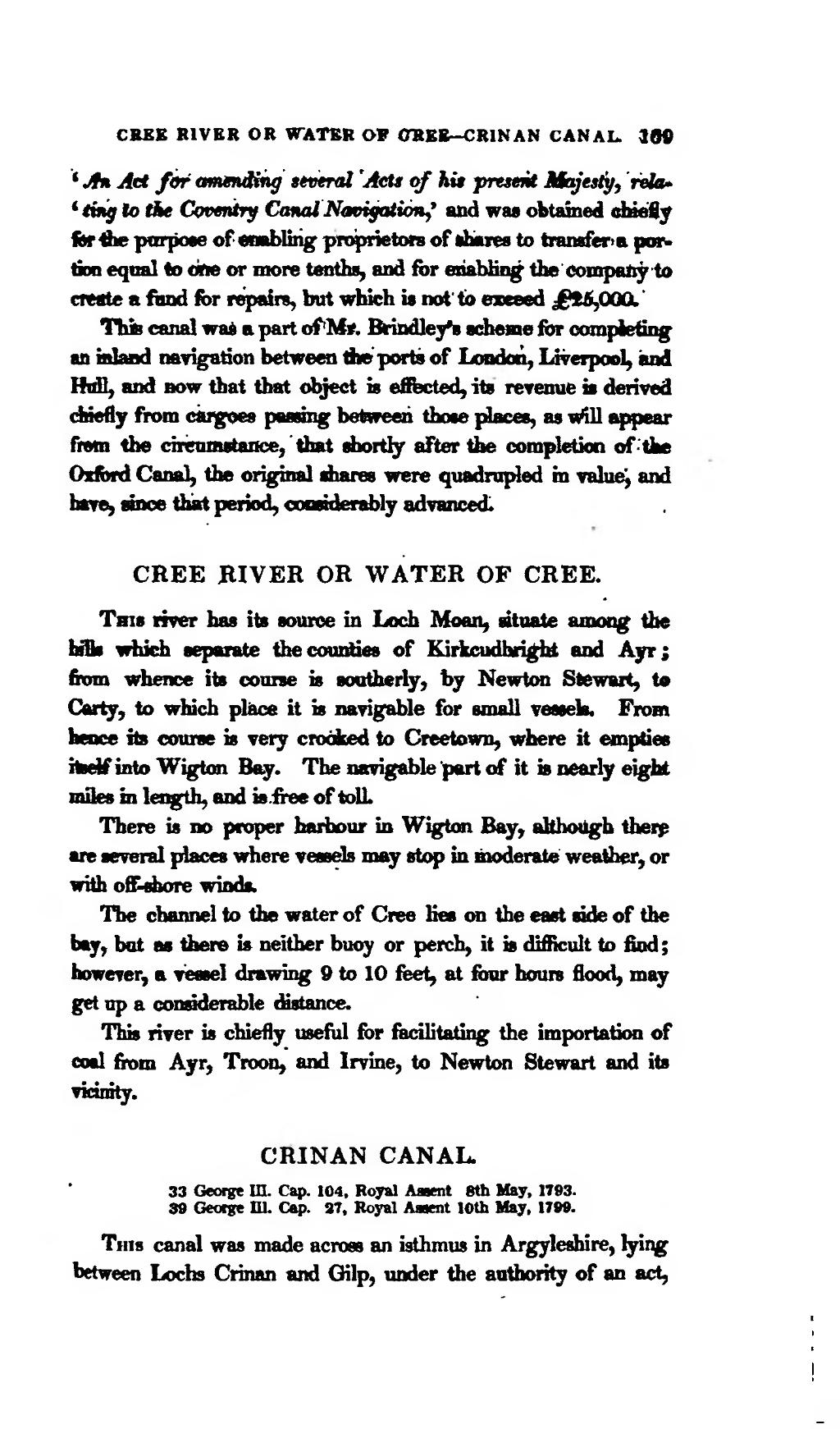An Act for amending several Acts of his present Majesty, relating to the Coventry Canal Navigation, and was obtained chiefly for the purpose of enabling proprietors of shares to transfer a portion equal to one or more tenths, and for enabling the company to create a fund for repairs, but which is not to exceed £25,000.
This canal was a part of Mr. Brindley's scheme for completing an inland navigation between the ports of London, Liverpool, and Hull, and now that that object is effected, its revenue is derived chiefly from cargoes passing between those places, as will appear from the circumstance, that shortly after the completion of the Oxford Canal, the original shares were quadrupled in value, and have, since that period, considerably advanced.
CREE RIVER OR WATER OF CREE.
THIS river has its source in Loch Moan, situate among the hills which separate the counties of Kirkcudbright and Ayr; from whence its course is southerly, by Newton Stewart, to Carty, to which place it is navigable for small vessels. From hence its course is very crooked to Creetown, where it empties itself into Wigton Bay. The navigable part of it is nearly eight miles in length, and is free of toll.
There is no proper harbour in Wigton Bay, although there are several places where vessels may stop in moderate weather, or with off-shore winds.
The channel to the water of Cree lies on the east side of the bay, but as there is neither buoy or perch, it is difficult to find; however, a vessel drawing 9 to 10 feet, at four hours flood, may get up a considerable distance.
This river is chiefly useful for facilitating the importation of coal from Ayr, Troon, and Irvine, to Newton Stewart and its vicinity.
CRINAN CANAL.
33 George III. Cap. 104, Royal Assent 8th May, 1793.
39 George III. Cap. 27, Royal Assent 10th May, 1799.
THIS canal was made across an isthmus in Argyleshire, lying between Lochs Crinan and Gilp, under the authority of an act,
